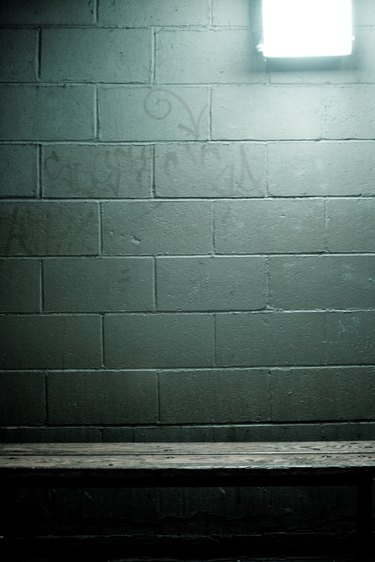
While the most common way to install drywall is to attach the wallboard panels to studs or joists, you aren't limited to those two options. If you want to install drywall over a masonry wall, an old plastered wall, or over a wall where the studs are uneven, you can install furring strips first, and then install the drywall to the strips. The type of furring strips you choose and the method by which you install the strips will depend upon the type of surface you want to drywall.
Furring
Video of the Day
You can purchase bundles of wood strips, labeled as furring strips, but furring actually refers to the process of leveling and preparing a frame to which you can install drywall panels. Standard furring strips are 1.5 inches wide and up to 1 inch thick, although you can use different board dimensions for furring. If you have a stud wall where the studs are not even, you'll use very thin shims to fur-out the studs that recede in preparation for drywall installation. By running a taut string from one side of the stud wall to the other, you can see which studs to fur-out, because they won't touch the string.
Video of the Day
Leaving Room for Wiring
If you want to install drywall over a concrete wall, such as a basement wall, use larger boards as furring strips to allow space for electrical wiring. Two-inch by 4-inch studs, placed flat along the wall provide a 1.5 inch space between the concrete wall and the drywall, which allows you to run wiring to outlets. The best way to do this is to install a board horizontally about 1 inch off the concrete floor and then install the vertical furring strips 16 inches apart, setting each one an inch above the bottom board. Run the wires between the bottom board and the vertical boards.
Attaching Furring Strips to Masonry
Pre-drill holes in the furring strips 12 inches apart, and then hold the strip in place where you will install it on the wall. With a small pencil, make a mark through each hole on the concrete wall. Remove the furring strip, drill a hole in the concrete wall with a hammer drill and then hold the strip in place and insert concrete screws through the wood and the concrete wall. Countersink the screw heads so they don't interfere with the drywall panels.
Hanging the Drywall
Once the furring strips are in place, you can install the drywall the same way you would on any stud wall. For a standard 8-foot high wall, start by installing a sheet of drywall horizontally at the top edge of the wall, using drywall screws inserted every 8 inches into the furring strips. Continue installing panels along the top of the wall and then install the bottom row of panels.